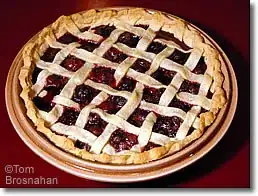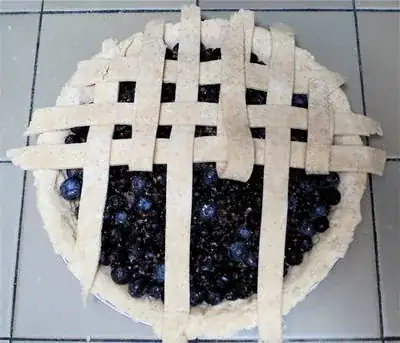I just made a lattice pie crust for the first time. The best I can say about it is that it wasn't a total disaster. So I would like to know what is the proper way to make it.
- How much dough do I actually need for one lattice (let's say for a 26 cm pan)?
- What crust thickness is optimal for the strips? (I had 3 mm, and it seemed a bit thin, they tore sometimes).
- How many strips do I need?
- What length should my strips be? Obviously, they should be longer than the finished lattice's size, because they weave over and under. But how much extra length do I need for that?
- Is there a good technique for weaving which helps me make an evenly weaved crust? I had lots of trouble managing the strips in the middle (widest) part.
- Once weaved, how do I keep the strips from moving around while I transfer the lattice to the fridge and to the pie?
- How do I attach the upper crust to the lower crust? My pinching didn't produce too good a result.
- (maybe part of the above) How do I make the edge of the pie aesthetically acceptable? Mine is one long lump.
- How do I prevent the liquid in the filling from squeezing through the crust holes and flooding the crust?
- (should probably have come first) Are denser or looser lattices easier to make?
I made a rather loose lattice, like this one:

But I have seen much denser pie crusts too, like this one.

I know this is a rather long question, if you people think it is better, I will split it into many small ones. Feedback welcome in the comments here or in chat.
